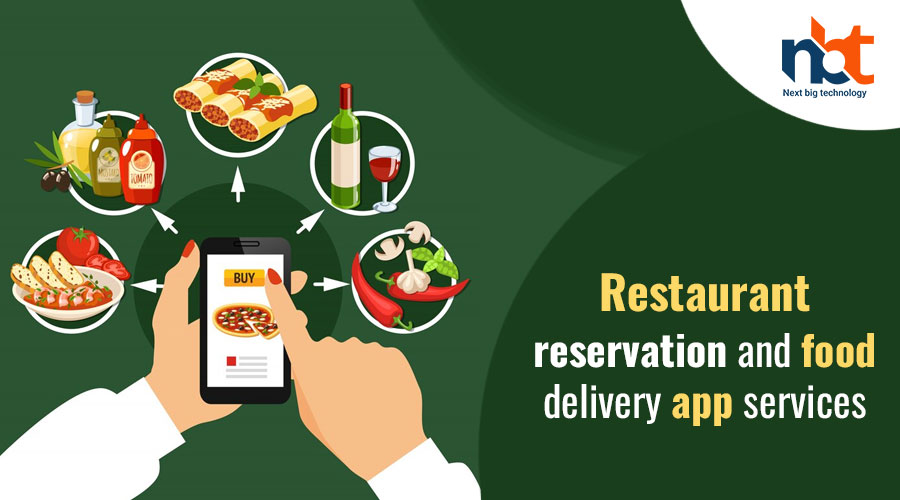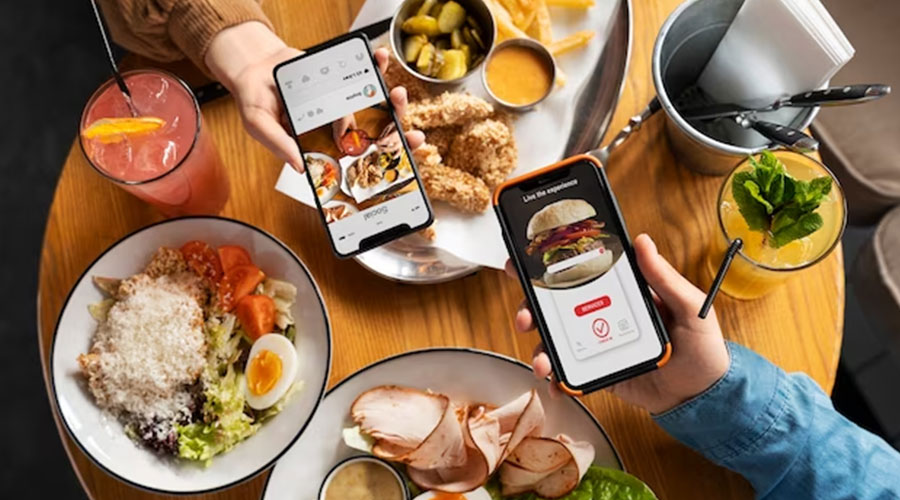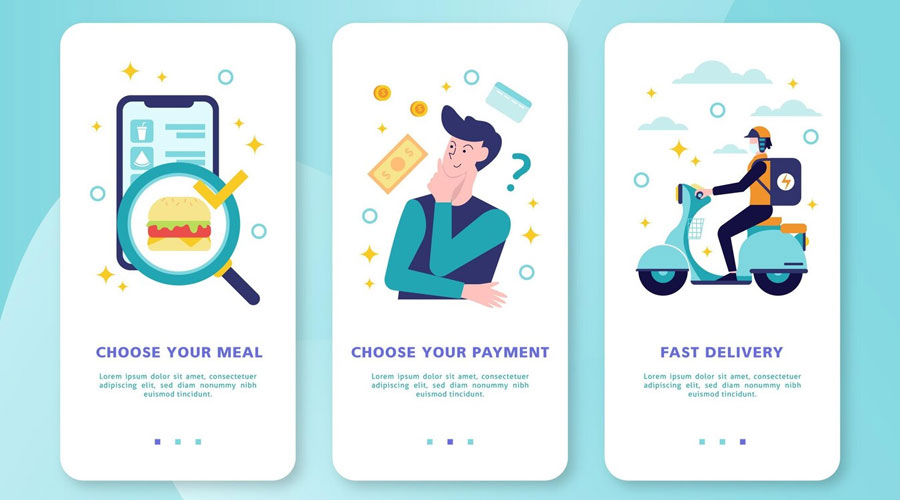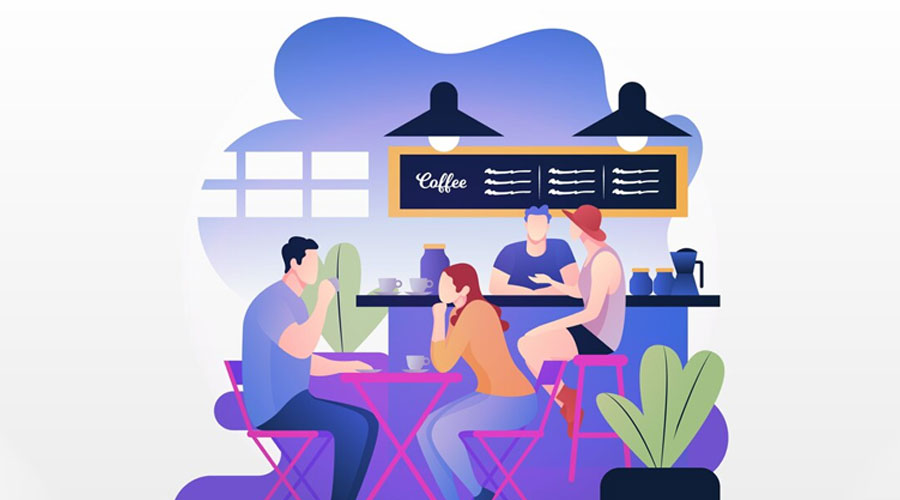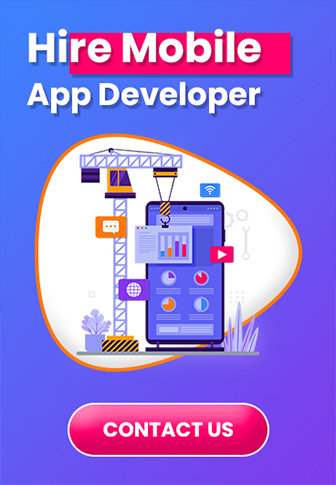Table of Contents
Introduction
The culinary world has witnessed a remarkable transformation in recent years, and at the heart of this gastronomic revolution are restaurant reservation and food delivery apps. These digital platforms have become more than just tools for convenience; they have reshaped the way we experience and enjoy food. In this article, we delve into the dynamic evolution of restaurant reservation and food delivery apps, exploring their impact on the restaurant industry, the changing dining habits of consumers, and how these apps have harnessed the power of SEO optimization to stay competitive in the ever-expanding digital marketplace.
Before we embark on this culinary journey, it’s essential to understand the fundamental roles of these apps in our lives and the restaurant industry.
The Significance of Restaurant Reservation Apps
Restaurant reservation apps have transcended mere convenience and have become an integral part of the dining experience. They offer diners a stress-free way to secure a table at their favorite eateries, ensuring a seamless and enjoyable dining experience.
Traditionally, making a restaurant reservation involved a series of time-consuming steps, from making a phone call to enduring long queues or simply taking a chance and walking into a restaurant hoping for an available table. The advent of reservation apps changed the game entirely. Now, diners can reserve their desired table and dining time with a few taps on their smartphones.
The Food Delivery App Phenomenon
Food delivery apps, on the other hand, have introduced an unprecedented level of convenience and accessibility to dining. Whether it’s your favorite local restaurant or a new culinary adventure from a different part of the world, these apps bring the world’s cuisines to your doorstep.
Imagine the days when calling your favorite restaurant for a home delivery meant navigating through busy phone lines, relaying your order to harried staff, and then anxiously awaiting your meal. Enter food delivery apps. These platforms have transformed the way we enjoy our favorite dishes, allowing us to place orders and have restaurant-quality meals delivered with a few swift taps on our smartphones.
Now that we have set the stage for our exploration of these culinary game-changers, let’s delve into the fascinating journey of restaurant reservation and food delivery apps and discover how they have not only adapted to changing times but have also harnessed SEO optimization strategies to remain competitive in the digital marketplace.
Benefits of Using Restaurant Reservation Apps
Here are some additional benefits of using restaurant reservation apps:
- Time Efficiency: Restaurant reservation apps save you the hassle of waiting in long queues or making numerous phone calls to secure a table. With a few taps on your smartphone, you can easily book a table, reducing waiting time and making dining out a more efficient experience.
- Customization: Many reservation apps allow you to specify your preferences, such as table location, special occasions, or dietary restrictions. This personalization ensures that your dining experience meets your specific requirements.
- Real-Time Availability: These apps provide real-time information about table availability, helping you find the most suitable restaurant and time slot based on your preferences and the restaurant’s availability.
- Discounts and Promotions: Some reservation apps offer exclusive discounts, promotions, or loyalty rewards to users. This can lead to cost savings and incentives for using the app regularly.
- User Reviews and Ratings: Reservation apps often include user reviews and ratings for restaurants. This feature helps you make informed decisions by reading about other diners’ experiences and assessing the quality of the restaurant before making a reservation.
- Convenient Payment Options: Many reservation apps allow you to pre-pay for your meal, making the dining experience smoother and more convenient. You can also split the bill with friends directly through the app, avoiding awkward financial discussions at the table.
- Notification and Reminders: Reservation apps send you notifications and reminders for your upcoming reservations. This eliminates the risk of forgetting your booking and ensures a seamless dining experience.
- Access to Exclusive Restaurants: Some high-end and exclusive restaurants partner with reservation apps to offer limited access to their services. Using these apps can grant you access to culinary experiences that might otherwise be challenging to secure.
- Wider Restaurant Selection: Reservation apps offer a comprehensive database of restaurants, ranging from local eateries to fine dining establishments. This broad selection allows you to explore a wide variety of culinary options and discover new favorites.
- Reduced Language Barriers: When traveling to foreign countries, restaurant reservation apps often offer translations and detailed information in multiple languages. This can be particularly helpful when you’re not familiar with the local language.
- Environmental Benefits: By reducing the need for paper reservations and printed menus, reservation apps contribute to environmental sustainability. Many restaurants also offer digital menus through these apps, further reducing paper waste.
- Contactless Dining: In response to the COVID-19 pandemic, reservation apps introduced features for contactless dining. This includes options to view menus, place orders, and pay the bill from your mobile device, minimizing physical contact.
- Integration with Navigation Apps: Some reservation apps integrate with navigation and map apps, making it easier to find your way to the restaurant and navigate to your reservation.
- Special Occasion Planning: Reservation apps are excellent tools for planning special occasions like birthdays, anniversaries, or romantic dinners. You can leave notes for the restaurant staff to ensure your celebration is memorable.
Features of Food Delivery Apps
Food delivery apps have come a long way from simply facilitating the ordering and delivery of meals. In today’s highly competitive market, these apps continuously evolve by adding new features to enhance the user experience and stay ahead of the competition. Here, we’ll explore some of the notable add-on features of food delivery apps that have become increasingly popular.
- Real-Time Order Tracking: Real-time order tracking has become an essential feature for food delivery apps. It allows users to track their orders from the moment they are placed to when they’re out for delivery. This feature provides transparency and peace of mind to customers, as they can see exactly where their food is and when it’s expected to arrive.
- Scheduled Deliveries: Many food delivery apps now offer the option to schedule deliveries in advance. This feature is particularly useful for busy individuals or those planning meals for specific occasions. Users can set a delivery time that suits their schedule, ensuring their food arrives precisely when they need it.
- Group Orders: Group orders are perfect for social gatherings and office lunches. This feature enables multiple users to add items to a single order, making it convenient for group organizers to coordinate and pay for a collective meal.
- Dietary and Allergen Filters: Recognizing the importance of dietary restrictions and allergies, food delivery apps have incorporated filters that allow users to find restaurants and dishes that cater to specific dietary preferences. These filters can include options for vegan, gluten-free, nut-free, or other dietary restrictions.
- Virtual Kitchens (Cloud Kitchens): Some food delivery apps have partnered with virtual kitchens, also known as cloud kitchens or ghost kitchens. These are kitchens dedicated solely to fulfilling delivery orders and do not have a physical restaurant for dine-in customers. This partnership allows food delivery apps to offer a wider range of cuisines and dishes to their users.
- Subscription Services: Subscription services have gained popularity among food delivery apps. Users can subscribe to premium memberships that offer benefits such as free delivery, exclusive discounts, and priority customer support. These subscriptions provide a cost-effective option for frequent users.
- Restaurant Rating and Review Systems: While this is not a new feature, food delivery apps have continuously improved their rating and review systems. Users can rate restaurants, leave detailed reviews, and upload photos of their meals, helping others make informed choices. Restaurants with high ratings are prominently featured, boosting their visibility.
- Integrated Loyalty Programs: Many food delivery apps have integrated loyalty programs, allowing users to earn points or rewards for every order. These rewards can be redeemed for discounts, free items, or exclusive offers, incentivizing users to stick with the app for their food orders.
- In-App Chat and Customer Support: To provide better customer service, food delivery apps now include in-app chat support. Users can easily communicate with customer support representatives if they have questions or issues related to their orders. This feature ensures quick and efficient problem resolution.
- Restaurant Recommendations: Using machine learning and AI, food delivery apps offer personalized restaurant and dish recommendations based on a user’s past orders and preferences. This feature simplifies the decision-making process for users and encourages them to explore new culinary experiences.
- Integration with Digital Wallets and Contactless Payments: In response to the demand for contactless transactions, food delivery apps have integrated with various digital wallets and contactless payment methods. Users can pay for their orders without handling cash or credit cards, promoting a more convenient and hygienic payment process.
- Multi-Language Support: To cater to a diverse user base, food delivery apps often provide support for multiple languages. This feature enhances accessibility and user-friendliness for customers who may not be fluent in the app’s default language.
- Live Order Updates and Alerts: In addition to tracking orders, food delivery apps send live updates and alerts to users. This includes notifications for order confirmation, estimated delivery times, and delivery arrival. These real-time updates keep users informed and engaged throughout the order process.
- Virtual Assistant Integration: Some food delivery apps have integrated virtual assistants or chatbots to assist users in placing orders, answering common queries, and providing recommendations. This feature adds a layer of interactivity and convenience to the app.
Challenges and Concerns
In addition to the evolution and SEO optimization of restaurant reservation and food delivery apps, there are several challenges and concerns that these platforms must address to maintain their success and relevance.
1. Competition and Market Saturation: The restaurant reservation and food delivery app market is highly competitive. New players are constantly entering the scene, making it challenging for established apps to maintain their market share. These apps must continuously innovate to stay ahead of the competition.
2. Quality Control: Ensuring the quality of food and service is a perpetual challenge for food delivery apps. They often rely on third-party restaurants and drivers, making it difficult to guarantee consistency. Maintaining food safety standards and improving delivery times are constant concerns.
3. Data Privacy and Security: As these apps collect a vast amount of user data, they must be vigilant in safeguarding it. Concerns about data breaches and privacy violations have led to increased scrutiny from regulators and customers. Apps must invest in robust cybersecurity measures and transparent data handling practices.
4. Regulatory Compliance: The restaurant and food delivery industry is subject to various regulations, including food safety standards, employment laws, and business licensing requirements. Compliance with these regulations can be complex and challenging for app providers, especially when operating in multiple regions.
5. Restaurant Partnerships and Fees: Building and maintaining partnerships with restaurants can be challenging. Some restaurants are wary of the high fees charged by food delivery apps, which can eat into their profit margins. Apps must strike a balance between profitability and maintaining healthy relationships with their partner restaurants.
6. User Experience: The user experience is crucial for the success of these apps. Ensuring a seamless and intuitive interface, quick load times, and reliable customer support are ongoing concerns. User feedback and evolving technology trends necessitate constant improvements.
7. Sustainability and Environmental Concerns: Food delivery apps are increasingly being scrutinized for their environmental impact. The packaging waste and carbon emissions associated with deliveries are concerns that app providers are addressing through eco-friendly initiatives and sustainable practices.
8. Cultural and Dietary Diversity: Addressing cultural diversity and dietary preferences is a challenge for these apps. They must cater to various cuisines and dietary restrictions, which can be complicated in diverse regions.
9. Consumer Trust: Maintaining consumer trust is critical. Negative incidents such as incorrect orders, late deliveries, or food quality issues can erode trust quickly. Apps must work diligently to ensure customer satisfaction and address issues promptly.
10. Economic and Labor Concerns: The gig economy model, which relies on freelance drivers, has raised concerns about worker rights and job security. Apps must navigate these labor-related challenges while maintaining a viable business model.
Future Trends in Restaurant Tech
As restaurant reservation and food delivery apps continue to evolve, they are not only shaping the way we experience dining but also actively contributing to the tech-driven transformation of the restaurant industry. Here are some future trends in restaurant tech that are likely to have a significant impact:
1. Augmented Reality (AR) Menus
Imagine being able to view a restaurant’s menu in augmented reality through your smartphone or AR glasses. This technology will allow diners to see 3D representations of dishes, read detailed descriptions, and even view customer reviews and ratings superimposed on the physical menu. It will provide an immersive and informative dining experience, helping customers make more informed choices.
2. Voice Command Integration
Voice command technology is becoming increasingly prevalent in our daily lives. In the future, restaurant reservation and food delivery apps are likely to incorporate voice command integration, allowing customers to place orders or make reservations using voice assistants like Siri, Alexa, or Google Assistant. This hands-free approach will enhance convenience and accessibility.
3. Smart Kitchen Appliances
Restaurants will increasingly invest in smart kitchen appliances and equipment that can be controlled remotely and provide real-time data. This tech will enable chefs to monitor cooking temperatures, control ovens, and even receive alerts when dishes are ready. This level of automation and precision will contribute to improved food quality and consistency.
4. Robotics in the Kitchen
Robotic kitchen assistants are already making their debut in some restaurants. These robots can handle various tasks, such as food preparation, cooking, and even dishwashing. As the technology advances and becomes more cost-effective, we can expect to see robots working alongside human chefs in a wide range of restaurant types.
5. Enhanced Personalization
Personalization is key to the future of restaurant tech. Apps will use AI and machine learning to analyze user data and preferences, creating highly personalized dining experiences. This could include tailored recommendations, special menus, and even customized portion sizes to meet individual dietary needs.
6. Blockchain for Supply Chain Transparency
Blockchain technology is being explored to improve supply chain transparency in the restaurant industry. It will allow customers to trace the origins of their food, including details about the source of ingredients, farming practices, and safety certifications. This transparency will enhance trust and help restaurants stand out by demonstrating their commitment to quality and sustainability.
7. Virtual Reality Dining Experiences
Virtual reality (VR) dining experiences will transport customers to unique and immersive settings while enjoying their meal. For example, a customer dining at a local restaurant can use a VR headset to dine virtually in a far-off destination, complete with 360-degree views and ambient sounds. This trend is set to revolutionize the concept of dining out.
8. Enhanced Sustainability Efforts
Restaurants and food delivery apps will continue to prioritize sustainability. This includes using innovative technology to minimize food waste, optimize delivery routes, and reduce their carbon footprint. Customers will have the option to choose eco-friendly packaging and support restaurants with strong sustainability initiatives.
9. 5G-Enabled Dining
With the rollout of 5G networks, the restaurant tech industry will benefit from faster and more reliable internet connectivity. This will enhance the speed of food delivery and improve the functionality of reservation apps. It may also enable real-time video streaming of chefs preparing dishes in select restaurants, allowing customers to watch the cooking process from home.
10. Contactless and Cashless Payments
Contactless and cashless payment options will become the norm, ensuring a hygienic and convenient dining experience. Customers can pay for their meals with a simple scan of their smartphones, eliminating the need for physical menus or cash transactions.
Tips for Restaurant Owners
In today’s digital age, restaurant owners face unique challenges and opportunities. With the advent of restaurant reservation and food delivery apps, as discussed in the previous article, the dining landscape has transformed. This article provides essential tips for restaurant owners to not only survive but thrive in this ever-evolving digital environment.
Chapter 1: Embrace Technology
1.1 Online Reservation Systems
Incorporate online reservation systems into your restaurant. Make it easy for potential customers to book tables through your website or popular reservation platforms like OpenTable. This enhances the customer experience and ensures a more efficient operation.
1.2 Digital Menus
Create digital menus that can be accessed via QR codes or your restaurant’s website. This not only reduces the need for physical menus but also allows for easy updates and customization.
1.3 Mobile Payment Options
Consider offering mobile payment options to simplify the payment process for your customers. Apps like Apple Pay and Google Wallet are popular choices that enhance convenience and security.
Chapter 2: Optimize for Food Delivery
2.1 Partner with Food Delivery Apps
Collaborate with food delivery apps like Uber Eats, DoorDash, or Grubhub to expand your customer base. This provides a crucial avenue for reaching potential customers who prefer dining at home.
2.2 Online Ordering
Implement an online ordering system on your website or app. This enables customers to place orders for pickup or delivery directly from your restaurant, reducing the reliance on third-party platforms.
2.3 Packaging and Delivery Efficiency
Ensure your packaging is both functional and visually appealing. High-quality packaging not only keeps food fresh but also contributes to the overall dining experience. Streamline delivery processes to guarantee that food arrives hot and in perfect condition.
Chapter 3: Leverage Social Media
3.1 Engaging Content
Establish a strong social media presence by posting engaging content regularly. Share high-quality images and videos of your dishes, behind-the-scenes glimpses, and customer testimonials to create excitement and build a loyal following.
3.2 Customer Engagement
Engage with your customers on social media. Respond to comments and messages promptly, and encourage user-generated content by running contests or sharing user photos of your dishes.
3.3 Advertising
Use social media advertising to reach a broader audience. Platforms like Facebook and Instagram offer targeted advertising options that can be highly effective in attracting new customers.
Chapter 4: SEO and Online Visibility
4.1 Optimize for Local SEO
Ensure your restaurant’s online presence is optimized for local search. Claim and update your Google My Business profile, use location-specific keywords, and seek positive customer reviews.
4.2 Website Optimization
Maintain a user-friendly and responsive website. Optimize your website’s content for search engines, making use of relevant keywords, meta tags, and alt text for images.
4.3 Blog and Content Marketing
Regularly update your website with relevant blog posts, articles, and content related to your restaurant. These not only improve your SEO but also provide valuable information to your audience.
Chapter 5: Customer Experience
5.1 Personalization
Leverage customer data to personalize the dining experience. This includes tailoring recommendations, sending personalized offers, and acknowledging special occasions like birthdays.
5.2 Customer Feedback
Encourage customer feedback and take it seriously. Act on constructive criticism and use positive feedback as testimonials to build trust.
5.3 Loyalty Programs
Implement a loyalty program to reward repeat customers. Offer discounts, special deals, or exclusive access to keep them coming back.
Chapter 6: Sustainability Initiatives
6.1 Eco-Friendly Practices
Embrace sustainability by using eco-friendly packaging, sourcing local and sustainable ingredients, and reducing food waste through smart inventory management.
6.2 Transparency
Communicate your sustainability efforts to your customers. Transparency regarding your eco-friendly practices can attract environmentally conscious diners.
Chapter 7: Stay Adaptable
7.1 Continuous Learning
Stay updated on industry trends and customer preferences. Attend industry conferences, participate in workshops, and seek inspiration from successful restaurateurs.
7.2 Flexibility
Be adaptable to change. The restaurant industry is dynamic, and successful owners are open to new ideas, innovations, and market shifts.




